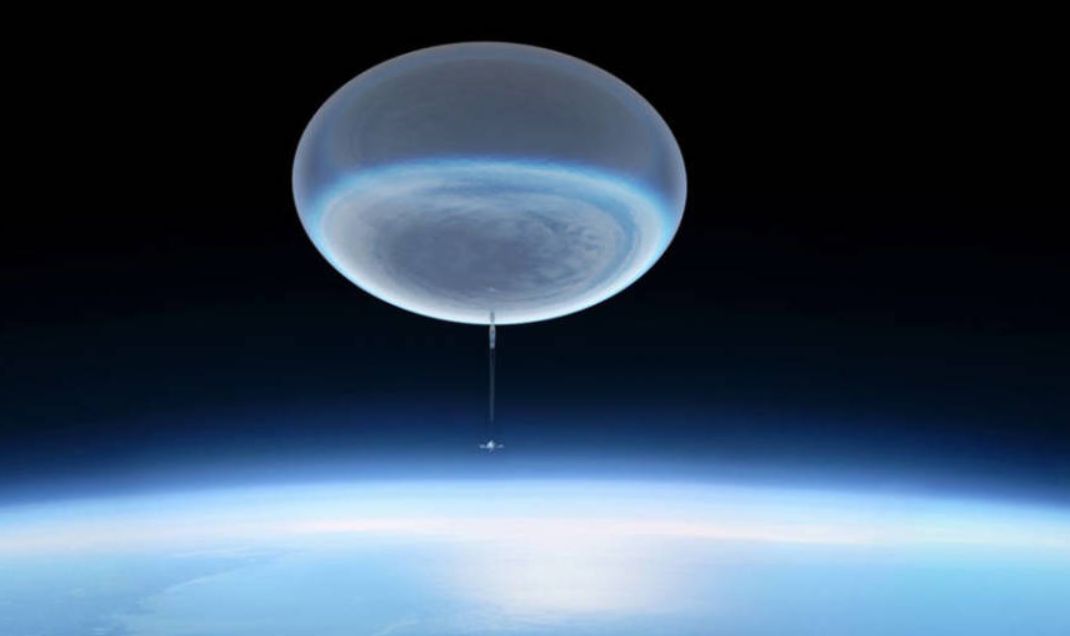NASA is working on an ambitious mission to bring a balloon the size of a soccer field into the stratosphere. In this way, it aims to raise a 2.5-meter telescope to the second layer of the atmosphere to observe the cosmos at wavelengths that are not visible from the Earth’s surface.
ASTHROS, short for (Astrophysics Stratospheric Telescope for High Spectral Resolution Observations at Submillimeter-wavelengths), will depart Antarctica in December 2023, if all goes as planned by NASA’s Jet Propulsion Laboratory, and will pass about three weeks adrift between air currents covering the icy southern continent, the US space agency explains in a statement.
In its wake, it could unlock several milestones in astrophysics, starting with an accurate measurement of the motion and velocity of gas around newly formed stars around the Milky Way. It will also detect the presence of some specific types of nitrogen ions (atoms that have lost some electrons) with the idea of locating the so-called stellar winds from massive stars and supernova explosions.
In other words, ASTHROS will make the first three-dimensional maps of gas density, velocity, and movement in the regions of space where stars form. By obtaining this information, scientists hope to obtain enough data to understand how newborn stars influence their environment and to refine computer simulations of the evolution of galaxies.
“stellar feedback, such violent outbursts can, over millions of years, disperse the surrounding material and impede star formation or halt it altogether. But stellar feedback can also cause material to clump together, accelerating star formation. Without this process, all the available gas and dust in galaxies like our own would have coalesced into stars long ago.” explains NASA scientist Jorge Pineda, principal investigator for the ASTHROS project. “Computer simulations of galaxy evolution still can’t quite replicate the reality that we see out in the cosmos. The nitrogen mapping that we’ll do with ASTHROS has never been done before, and it will be exciting to see how that information helps make those models more accurate.”
Outdated technology?
To meet its goal, ASHTROS will need to travel in a gigantic balloon inflated with helium that will be approximately 150 meters wide. A rack attached to the device will carry the telescope – a 2.5-meter satellite dish – as well as a series of mirrors, lenses, and detectors designed to capture infrared light from a long distance. During the flight, scientists will be able to remotely control the direction the telescope is pointing and download the data in real-time using satellite links.
The team expects the balloon to complete two or three laps around the South Pole in a period of between 21 and 28 days. “We will launch ASTHROS to the edge of space from the most remote and harsh part of our planet,” recalls the project director, Jose Siles. “If you stop to think about it, it’s really challenging, which makes it so exciting at the same time.” Upon completion of their mission, experts will give the order to detach the balloon from the telescope, which will return to Earth with the help of a parachute.
Balloon missions like ASTHROS are more risky than space missions, but produce great rewards
While the use of balloons may seem like outdated technology, it is still unrivaled. NASA launches about 10 or 15 missions a year across the planet for technological and informational purposes. This type of project not only has lower costs than space missions but also requires less planning time. This means that balloons are often used as testing grounds for scientific innovations that later travel to space.
“Balloon missions like ASTHROS are higher-risk than space missions but yield high-rewards at modest cost,” says JPL engineer Jose Siles, project manager for ASTHROS. “With ASTHROS, we’re aiming to do astrophysics observations that have never been attempted before. The mission will pave the way for future space missions by testing new technologies and providing training for the next generation of engineers and scientists.”
